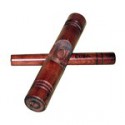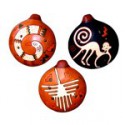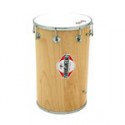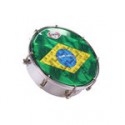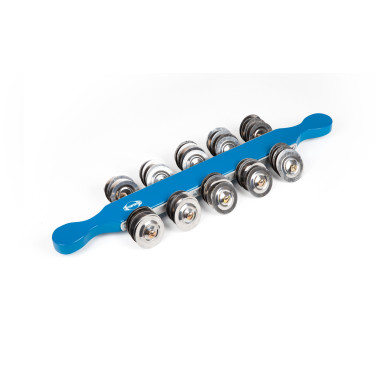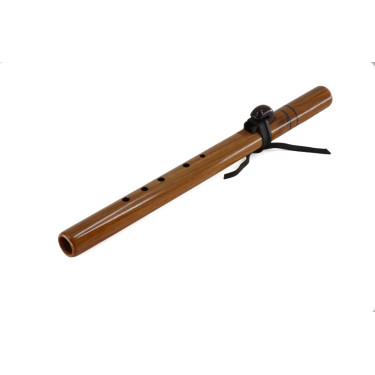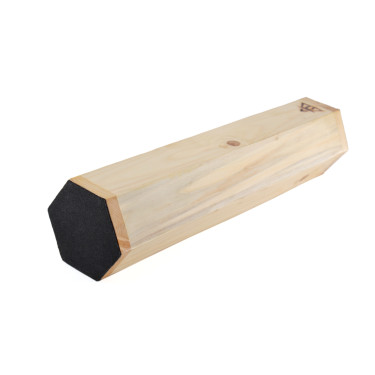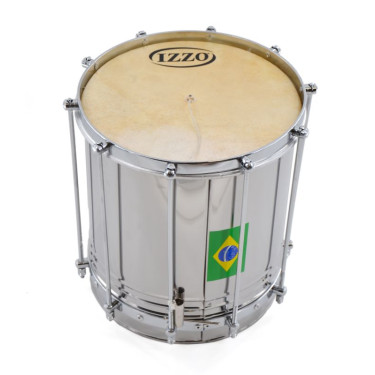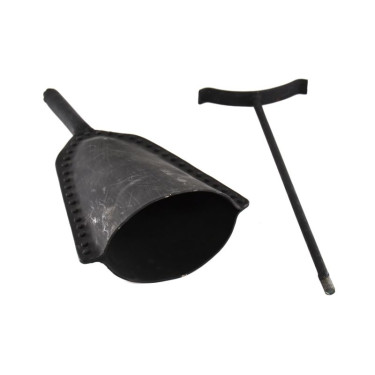Aucun produit
Les prix sont TTC
Produit ajouté avec succès au panier
Il y a 0 produits dans votre panier Il y a un produit dans votre panier

Latin American instruments There are 325 products.
MUSICAL INSTRUMENTS FROM LATIN AMERICA AND THE CARIBBEAN.
Discover an exceptional selection of percussion musical instruments from Latin America and the Caribbean. Brazilian percussion (Samba, Batucada, Pagoda, Capoeira), Colombian percussion (Cumbia, Champeta, Vallenato), Argentinian percussion (Chacarera), Cuban percussion (Son, Merengue, Gua...
MUSICAL INSTRUMENTS FROM LATIN AMERICA AND THE CARIBBEAN.
Discover an exceptional selection of percussion musical instruments from Latin America and the Caribbean. Brazilian percussion (Samba, Batucada, Pagoda, Capoeira), Colombian percussion (Cumbia, Champeta, Vallenato), Argentinian percussion (Chacarera), Cuban percussion (Son, Merengue, Guanguanco, Guarachapangueo), Caribbean percussion (Biguine), Zouk, Mazurka, Gwo Ka, Kompa), Peruvian percussion (Tondero, Cumbia), Venezuelan percussion (Joropo), and other Latin percussion according to the arrivals and discoveries made with traditional instrument makers. Don't wait any longer, play surdo, repinique, caixa, cavaquinho, caxixi, pandeiro, claves, bongos, guiro, maracas, cajon, conga, marimbula, maracas, cuica, berimbau, timbales, rebolo, timbal, alfaia, bell...
Subcategories
Alfaïa
The alfaia is a kind of large animal-skinned drum, carried on the shoulder by a rope or strap and played with two wooden bats. This drum is used in the maracatu, an African-influenced musical genre from Pernambuco, in the Brazilian Northeast. Are you a lover of traditional Brazilian music and would like to play the maracatu drum? Discover our selection of 18", 20" and 22" alfaia drums in natural skin and buy your model on Djoliba.com.
Atabaque
The atabaque or Ilu is the basis of the Brazilian percussion tradition. This percussion is used in various musical forms in the Northeast of Brazil, including candomblé, samba or capoeira. Of African origin, this traditional Brazilian drum is stretched with a sisal rope system. Capoeiristas, musicians playing capoeira often prefer traditional models with wooden cleats to tune the drum. The body is built like a barrel, reinforced by iron rings. There are also more modern models with a mechanical tensioning system as proposed by the Gope brand for example. Both atabaque models are provided with a natural skin.
Rain-stick
The rain stick is an ideal instrument to create sound effects and to imitate the sound of falling rain. Whether you are a musician or a child care worker for example, discover a range of different rainstick models and buy the rain stick that suits you best for your workshops or percussion set.
Berimbau
The Berimbau, a Brazilian musical instrument, is a musical bow of African origin. There are three models of berimbau: the berra-boi or gunga which has a low sound, the medio or gunga which has a medium sound and the violinha or viola which is the highest of the three. The berimaubau consists of a curved stick made of hardwood (biriba) or bamboo, a steel wire stretched between the ends of the stick, and a dry gourd hollowed out and opened (the cabaça or coité) to serve as a sounding board. A wooden stick, usually a few dozen centimetres long, is used to strike the metal string and the dobrão (vintem or pedra), a metal coin or a stone is put in contact with the metal string to give effects. The musician often holds a caxixí, a gourd-bottomed straw rattle, in the same hand as the drumstick. Today it is mainly the main instrument of capoeira (or moringue, a cousin of capoeira in the Indian Ocean), but it is also used in other forms of Brazilian music.
Bongo
Originally from eastern Cuba, the bongo (or bongó), a pair of drums made of natural skin, has spread throughout Latin music. The percussionist playing the bongos is called a bongocero. Today there are many models and brands of bongos. Djoliba offers you several models of bongos adapted to different practices, from the first price model to the professional model.
Caixa (snare drum)
The snare drum, called caixa in Brazil, has several variations depending on the style of samba. It consists of a metal barrel, two plastic skins and a tone that gives a special resonance to this Brazilian percussion instrument. The players use 2 wooden sticks. There is the caixa identical to the European snare drum to play Frevo (Recife region) and Samba Reggae (Salvador de Bahia region) and the snare drum from the Samba schools of Rio and São Paulo with a guitar string type timbre placed on the drumhead, therefore on top. The caixa is played on top "em cima" or on the bottom held by a strap like the military parade drums in Europe.
Cavaquinho
The cavaquinho is a musical instrument of Portuguese origin with four plucked strings resembling a small guitar. It can be found in different forms from Madeira to the Azores, through Brazil, and even as far as Hawaii, where it gives rise to the ukulele. This stringed instrument has become very widespread in Brazil, where it is sometimes called cavaco (cavaquinho is the diminutive). Today, it is fully integrated into Brazilian music, particularly the samba carioca, chorinho or samba de Enredo.
Caxixi
Caxixis are found in Africa and South America, particularly in Brazil. In capoeira music, the caxixi is played at the same time as the berimbau. In West Africa, it is used by singers, often together with drums. The caxixi (pronounced ca-chi-chi) is a percussion instrument consisting of a closed bell-shaped, flat-bottomed basket containing seeds or other small items. It is an idiophone, like the maracas, used in the same way: by shaking it. With the caxixi you can obtain two very different sounds: when the seeds inside touch the bottom of the gourd the sound is high-pitched and powerful, on the other hand, when the seeds touch the body braided in rush or rattan, the sound is soft and lower.
Chekere
The xequerê (also agbé or xequerè in Brazil) originated in Africa and arrived in Brazil through slaves. This almost forgotten instrument is becoming popular again in Brazil and Europe where it is used in different traditional music styles such as candomblé, samba, maracatu, but also in modern styles. The chekeré is made from a variety of squash, the calabash, dried and worked, on which is placed a mesh with seeds or pearls. The shekere can be shaken, struck on the hand, used in rotation, thrown and retrieved in rhythm.
Claves
The rhythm played with the claves is called the clave. The clave is often a simple rhythm, such as a pulse or other continuous rhythm during the piece, or with few rhythmic changes. The claves are made up of two wooden sticks that are struck against each other. Granadillo claves, ebony claves, coconut claves, acacia claves... a wide choice is available here.
Agogo bells
The bell is a musical instrument that is very widespread in Latin America and takes many different forms as it is found in many different styles of music. There are single-tone bells such as the campana, and multi-tone bells such as the agogos for example. They are usually made of metal but can also be made from natural materials such as coconut for example for the agogo de castanha.
Conga
The congas (quinto, conga, tumba) common in all Latin music are drums of different sizes with natural skin. Discover our models for beginners or professional musicians. Quinto, conga, tumbadora of the Roots Percussions brand in particular.
Cuica
Would you like to buy a cuica? This rubbed percussion with a barrel, skin and stem imitates the cry of animals. Mainly used in Brazilian music such as samba and pagoda, cuica models are numerous.
Flute
Djoliba offers you a selection of native flutes, also called Amerindian flutes. These flutes are made in Arizona by an experienced old Indian musician. Discover also other traditional flutes made by craftsmen.
Ganza
The ganza is a cylindrical shaker whose body is usually made of metal. It is a Brazilian percussion used in samba and other musical styles from Brazil. There are single and double ganza models in different sizes allowing the musician to use a shaker with more or less sound power.
Güiro
The güiro is a musical instrument of the idiophone family, which is frequently found in Cuba and Puerto Rico. This percussion instrument consists of a scraper with two holes through which the thumb and middle finger are passed to hold it. There are guiros made of wood, skin and synthetic material. This instrument is mainly used in Latin music.
Instruments à cordes
Brazilian, Chilean or Argentinean stringed instrument. According to our imports we offer you a selection of traditional stringed instruments such as cavaquinho, tres, cuatro, charango, banjo, ukulele.
Maracas
Maracas are percussion instruments that are very common in Latin and Caribbean music. Maraca means music in the Tupi language. Maracas, often made of leather, are very important in sound and in salsa orchestras where they are usually played by singers. The musical genre bolero has its own rhythm of maracas. In Colombia maracas can be found in the Cumbia. The Joropo, whose typical instrumental trio formula is: harp / cuatro venezolano / maracas, is played in Venezuela.
Marimbula
The marimbula, marímbula or bass kalimba is a musical instrument native to Cuba. It is a lamellophone that resembles a large African sanza, of which it is undoubtedly a descendant. Its use has spread throughout the Caribbean region and America.
Ocarina
The ocarina is an ovoid wind musical instrument, usually made of terracotta or ceramics. It looks like a goose head; hence its name: in Italian, oca means "goose" and ocarina means "little goose". We offer models of different sizes and shapes suitable for beginners and musicians alike.
Samba packs
Discover our selection of samba instrument packs. You are a band, a batucada (or samba bateria), an association playing Brazilian music, a school... Djoliba offers quality Brazilian musical instruments for beginners or experienced musicians. Buying percussion instruments for the batucada becomes simple according to your needs and budget. Save money by buying a samba pack and if you wish to add instruments or accessories to one of the packs, contact us.
Pandeiro
The pandeiro is a Spanish-Portuguese percussion instrument adopted in Brazil. The pandeiro is an instrument with a wide variety of sounds for a drum, which can be found in different genres of music throughout Brazil. It accompanies, alone or with other instruments, the verbal jousting of the repentistas of the Nordeste. It is the central instrument for all varieties of samba (samba de roda, samba de viola, partido alto, pagoda) and is the solo and accompanying instrument in the choro. Together with the berimbau, the pandeiro is the minimal orchestra of capoeira.
Rebolo
The rebolo is a single-skinned cylindrical drum that is played by hand. In the pagoda, it is often associated with the tan tan which is larger and deeper. The rebolo is an all-purpose instrument that can be used on different occasions. Usually with a matt skin (double skin producing a matt sound) its body is made of aluminium or wood, and sometimes even acrylic.
Reco reco
The reco-reco, also called caracaxá or querequexé, is a Brazilian percussion instrument of the family of scraped or scraped idiophones. It is a rhythmic musical accompaniment instrument. In the pagoda, for example, where it is often found, the rhythm section is reduced to its simplest expression: a surdo, a pandeiro, a tamborim, a reco-reco, a rebolo and some ganzas.
Repique de Mao
Mao's Repic is a reduced version of the surdo and is played by hand. In the style of pagoda music in Brazil, under the influence of certain musicians (including Fundo do Quintal), new instruments such as the Repique de mão have appeared, replacing the traditional instruments of the batucada, which are too noisy for small acoustic concerts.
Repinic
The repinique or repique is a percussion instrument used in Brazilian samba. It is a cylindrical metal drum 25 to 30 cm high, with 2 very taut synthetic membranes that the musician uses to direct the whole "Bateria". Held by a strap or two, depending on the region of Brazil, it can be played in different ways. In Rio for the Samba, it is played with one hand and a stick (or sometimes just with the hands as for the repique de mão). In Salvador de Bahia for Samba-Reggae, it is played with two wooden or soft plastic sticks. The skin is thus whipped and played more as a curl than a roll. Its function is to make the calls and question-answers of the bateria or batucada.
Rocar (chocalho)
The chocalho, chapinhas or rocar, is a percussion instrument. In Portuguese, the word "chocalho" is a generic term for shaken instruments, which also covers seed-filled Ganzás (or shakers). It consists of a frame or neck on which rods support small bells. The rocar is mainly used in samba drums. This type of instrument can vary greatly in size, shape and dimensions depending on whether it is played in one of the styles of samba and where its instrumental function also varies according to schools, arrangements...
Whistle
In Brazil, the whistle called Apito de samba has three tones. This small and very powerful instrument allows the leader of the bateria to make announcements to lead the batucada. There are 3-tone whistles made of wood (traditional whistle made in the Nordeste) and more modern whistles made of plastic or metal.
Surdo
The surdo is a two-skin drum used in particular in samba. Cylindrical in shape, it is made from a wooden or metal drum 45 to 70 cm high and about 40 to 65 cm in diameter. The skins are of animal or synthetic origin, single or "double" (covered). The main role of the surdo is to mark the second stage and, to a lesser extent, the first stage. It is played with a mallet and the hand, and in some cases with two mallets. It can also be found in frevo and other traditional music groups in the Brazilian Northeast, where it takes on the role of the bass drum in European brass bands.
Tamborim
Tambourine 6" (15 cm) in diameter, the barrel is usually no more than 4 cm deep. Generally made of metal, it is sometimes made of wood or plastic resin. The membrane is most often made of nylon, held in place by tie rods. It is very taut to produce a particularly dry and high-pitched sound. The tamborim is held with the so-called "weak" hand, the thumb and little finger on the outside of the drum, the other fingers on the inside. The index or middle finger is sometimes used to modify the sound by touching the skin from the inside. The instrument can be played either with a wooden stick to accompany a pagoda, chorinho or bossa nova formation as a soloist, or with a flexible, multi-stranded plastic stick (nylon or polyacetal) as part of a samba drum set.
Tantan
A single-skinned cylindrical drum, tantan is used in Brazil mainly in a style of music called pagoda. The tantan drum is made of metal (aluminium) or wood and is 35 cm in diameter and 70 cm high. This percussion is played by hitting both the skin and the body. The sound of the tantan is muted and deep. It is used as a hand surdo.
Timbal
Percussion instrument used in Brazil with a conical shaft usually made of light wood (plywood) or metal. The synthetic skin, with a clear, high-pitched sound, is stretched with tie rods. The timbal is played upright, usually carried vertically with a strap, but it can also be played on a stand. The two-handed striking technique is similar to that of the djembe and congas. The instrument is used to provide accompaniments and rhythmic sequences as a soloist in Brazilian percussion ensembles playing, for example, samba-reggae or axé. After almost disappearing, it was revived by the group Timbalada in the 1990s.
Triangle
Le triangle est un instrument de musique idiophone constitué d'une barre métallique de section circulaire pliée en deux points de manière à former un triangle plus ou moins régulier. Il est tenu d'une main par le musicien, qui frappe dessus à l'aide d'une tige, également métallique. Sa sonorité cristalline et aiguë lui permet d'être perceptible même lorsqu'il est joué dans un orchestre, amenant une partie rythmique structurant le morceau exécuté. Le triangle de forro est un grand triangle utilisé dans la musique brésilienne.
Zabumba
The zabumba is a percussion instrument characteristic of the Brazilian Northeast region. It is played in several genres or musical styles such as the forró, coco, xaxado or xote. The zabumba is a drum with two skins made of leather or synthetic material. It is played and struck by two sticks: one hits the upper drumhead and creates a low tone, while the lower drumhead is struck by a long, thin stick that gives a higher tone.
TREE RAIN STICK 48cm made in France
Discover this rain tree, entirely handmade from solid pine. Entirely made in France. Ideal for relaxation, storytelling, yoga workshops, etc.
Online only299,00 €TREE RAIN STICK 48cm made in France
Discover this rain tree, entirely handmade from solid pine. Entirely made in France. Ideal for relaxation, storytelling, yoga workshops, etc.
Online only245,00 €Rocar - Contemporânea wooden handel NATURAL
A chocalho consists of a series of parallel rows of hanging jingles resting on an axle or held together in a metal frame that the ...
85,00 €Rocar - Contemporânea wooden handel BLUE
A chocalho consists of a series of parallel rows of hanging jingles resting on an axle or held together in a metal frame that the ...
85,00 €Rebolo - 12 x 50cm - aluminium - Contemporãnea
Rebolo is a Brazilian percussion instrument, used to play samba. It is closely related to tantã.It is a single-headed hand ...
235,00 €Repinique 12" x 30cm G. Policarpo wood - 8 tension rods - Pro Series - Contemporãnea
This 12" x 30cm aluminum repinique is designed for demanding professional performances.Dimensions: 12" x 30cm Material: wood 8 tension rods Pro Series Brand: Contemporãnea
247,50 €TREE RAIN STICK
Discover this handmade rain tree in Mssif pine. Made entirely in France. The sound is soft, almost crystalline, and lasts between 5 and 6 minutes. Ideal for relaxation workshops, storytelling, yoga, etc.
Online only489,00 €TREE RAIN STICK
Discover this handmade rain tree in Mssif pine. Made entirely in France. The sound is soft, almost crystalline, and lasts between 5 and 6 minutes. Ideal for relaxation workshops, storytelling, yoga, etc.
Online only285,00 €Nova Double Flute - key of A
The Nova double flutes are handcrafted from domestic Spanish Cedar, which gives them a warm, full musical voice. The flute is sealed with non-toxic oils which give it a clear, bright voice. Instructional booklet FREE !
459,00 €Berimbau - Contemporânea - large natural model
Berimbau is a accessory of capoeira, a Brazilian art that combines traditional dance, fighting, music, singing and code of honor. It ...
119,00 €Berimbau - Contemporânea - large natural model
Berimbau is a accessory of capoeira, a Brazilian art that combines traditional dance, fighting, music, singing and code of honor. It ...
98,00 €Berimbau - Contemporânea - large natural model
Berimbau is a accessory of capoeira, a Brazilian art that combines traditional dance, fighting, music, singing and code of honor. It ...
85,00 €Timbal - 12" x 70 cm - Alu - Contemporanea Light
The timbal is a percussion instrument usually used in samba reggae, and can be found with Timbalada, the famous Salvador de Bahia school. It is played with the hands on a very taut plastic skin, producing a very dry, clattering sound. It can be used to set up fast, jerky rhythms and breaks.
203,00 €Surdo Nesting 12" x 32 cm - Contemporânea
Originally, the Surdo is a derivative of the bass drums played in European Street/brass bands, while, in terms of rhythm, its musical ...
140,00 €Native flute - Redtail Hawk - G (Wallnut)
The Red Tail Hawk - key of "G" minor has a soothing, warm, melodic voice. Because it is deeper in tone than the Sparrow Hawk "A" first time players are attracted to this key. Instructional booklet FREE !
199,00 €Native flute - Redtail Hawk - G (Wallnut)
The soft sound of this easy to play flute invites the imagination to sentimental journeys across wide plains… Diverse cultures and peoples around the planet have developed their unique folk flutes and some of them offer an immediate approach and are easy to handle
109,00 €Native flute - Redtail Hawk - G (Wallnut)
The Red Tail Hawk - key of "G" minor has a soothing, warm, melodic voice. Because it is deeper in tone than the Sparrow Hawk "A" first time players are attracted to this key. Instructional booklet FREE !
149,00 €TREE RAIN STICK
Discover this handmade rain tree in Mssif pine. Made entirely in France. The sound is soft, almost crystalline, and lasts between 10 and 11 minutes. Ideal for relaxation workshops, storytelling, yoga, etc.
Online only449,00 €Rebolo - 12" x 45 cm - Wooden Shell - IZZO
Rebolo is a Brazilian percussion instrument, used to play samba. It is closely related to tantã.It is a single-headed hand ...
179,00 €Cuica 10" x 30 cm - Steel - Natural Skin - IZZO
This instrument is traditionally played in Brazilian Samba bands. High-pitched, its tone has a squeaky quality that reminds this instrument’s own name. It is said to imitate animal voices (monkey).
109,00 €Gongue - Iron bell with short handle - Brazil
This iron gongue with a short handle is perfect for Brazilian rhythms.Material: iron Handle: short Origin: Brazil Use: percussion
139,00 €Gongue - Large iron bell - Brazil
This large iron gongue is perfect for Brazilian percussion.Material: iron Size: large Origin: Brazil Use: percussion
239,00 €Blue Ceramic Ocarina - Large Model with White Cord
This blue ceramic ocarina, large model, comes with a white cord for easy transport.Material: ceramic Color: blue Accessory: white cord Type: large model
23,00 €8" Wooden Pandeiro - Natural Skin - Izzo
This 8-inch wooden pandeiro with natural skin is perfect for Brazilian rhythms.Diameter: 8 inches Material: wood Skin: natural Brand: Izzo
69,00 €Simple Red Wood Chocalho 56cm - Pro Series - Contemporãnea
This simple red wood chocalho, 56 cm in length, from Contemporãnea's Pro Series is ideal for professional musicians.Length: 56 cm Material: red wood Series: Pro Brand: Contemporãnea
85,00 €Nylon tamborim stick - 1 strand - 42 cm
Nylon tamborim stick, ideal for Brazilian rhythms with great durability.Material: Nylon Length: 42 cm Use: Brazilian percussion
4,80 €Surdo mallet - Alu handle ALL AROUND D20 Black - 40 cm - Medium hard head - FLIPO
Surdo mallet with aluminum handle, perfect for intense performances.Lenght: 40 cm Handle: Aluminum Head: Medium hard
19,50 €Surdo mallet - alu handle LIGHT 40 cm hard felt - DOBRA
Light surdo mallet with aluminum handle and hard felt head.Brand: DOBRA Handle: Light aluminum Head: Hard felt
19,00 €Zabumba or surdo mallet for children - wooden handle - oval felt - 30 cm
Zabumba or surdo mallet for children with oval felt head.Length: 30 cm Handle: Wood Head: Oval felt
9,00 €










